DESCRIPTION:
This tiny simple microscope is signed around the eyecup 'GAUDIN A PARIS.' The tiny lens, made of molten quartz, is found in the signed black 'top hat' housing. This housing fits into a small lacquered brass cylinder with cutouts for a narrow slide. At the other end of the cylinder is a housing with a small aperture which allows only central axial light rays to enter. The housing for the aperture screws in and also serves to hold the slide in place against the slot. There is a single narrow slide with the instrument. This slide is labeled in English over the leftmost two subjects 'Peacock Butterfly' and on the right '..under wing Moth.' This slide, although quite old, may not be original to this instrument, but is the only slide in my collection that can fit inside the slit of this microscope. The top-hat portion containing the lens measures about 31.5 mm in diameter. The diameter of the knurled part of the part that screws into the bottom of the cylinder is about 18 mm in diameter. While the diaphragm housing screws in or out, the lens housing can slide in and out of the cylinder. The instrument measures about 22 mm long from the outside of the eyecup to the end of the aperture housing. The slide opening measures only 12.5 mm wide and about 2 mm thick. In use, this microscope must be held very close to the cornea, and must be pointed at a fairly bright light source.
HISTORY OF THIS MICROSCOPE AND MARC ANTOINE GAUDIN
In the early nineteenth century, optical workers were still looking for ways to reduce spherical and chromatic aberrations.
One way, first proposed by Sir David Brewster, was to use lenses made out of substances that had a higher refractive index than glass, allowing higher resolution for any given focal length. The only substances which qualified were gemstones and minerals. These included diamond, sapphire, garnet, other gemstones, and also quartz. C.R. Goring was interested in obtaining such lenses and therefore commissioned Andrew Pritchard to make such lenses. His first was a diamond lens made in 1824. Subsequently Pritchard marketed microscopes with jewel lenses. Sometime later, but no later than 1838, Gaudin of Paris discovered a way to make lenses out of 'rock crystal' (quartz). This process involved melting quartz with an oxyhydrogen source and then forming lenses from the molten substance, perhaps by dropping them in water. Apparently this became a commercial enterprize, and small microscopes using quartz lenses were made by Gaudin and sold not only by him but also by others including Lebours et Secretan who sold a pair of them in 1846 for forty francs. As these lenses must be used very close to the eye, and the lenses are quite tiny, these are very difficult to use. This difficulty as well as the development of a scientific basis of constructing achromatic aplanatic lenses of glass by J.J. Lister, led to the abandonment of jewel and then mineral lenses.
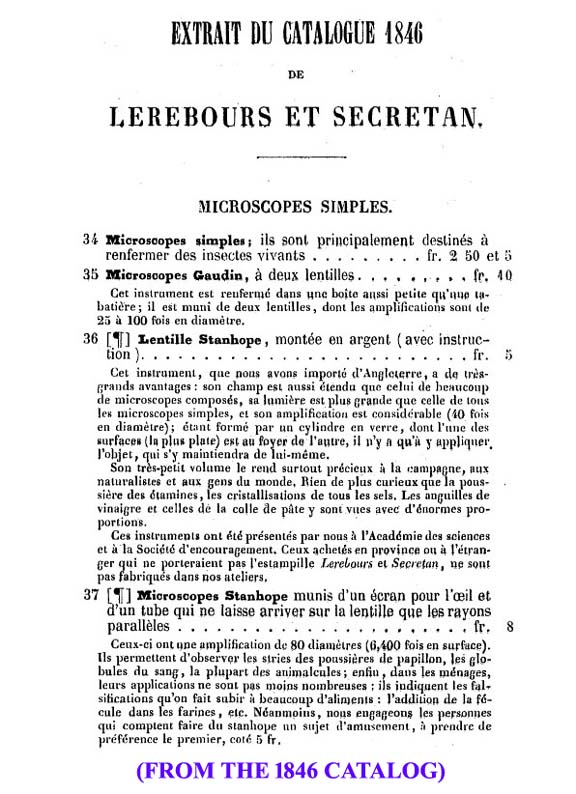
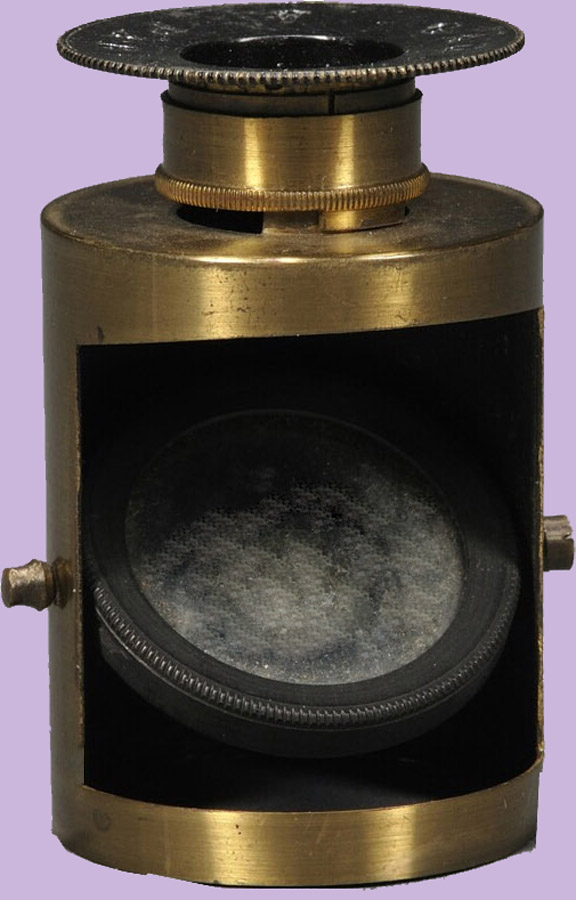 Apparently Gaudin microscopes were sold by others than just Gaudin as illustrated by the page from the Lebours et Secretan catalog seen here.
Two forms of Gaudin microscope are known. One is the type shown above, hand held. Another type is that shown to the right from another private collection, using a short 'drum' configuration, and has a rotatable mirror under the slit for the slide. The lens housings are the same for both models, but the drum type may have two different lens housings for two different magnifications.
Apparently Gaudin microscopes were sold by others than just Gaudin as illustrated by the page from the Lebours et Secretan catalog seen here.
Two forms of Gaudin microscope are known. One is the type shown above, hand held. Another type is that shown to the right from another private collection, using a short 'drum' configuration, and has a rotatable mirror under the slit for the slide. The lens housings are the same for both models, but the drum type may have two different lens housings for two different magnifications.
Marc Antoine Augustin Gaudin(b.1804, d.1880) was a chemist interested in molecular chemistry as well as crystals and optics. He was one of the earliest to propose that molecules of hydrogen and oxygen were diatomic. With his brother Alexis he became famous in photography, not only in its chemistry but also in designing a type of camera now named after him. His interest in studying crystals at high temperatures undoubtedly led to the discovery of how to make his quartz lens used in his microscopes, which were derived from melted quartz.
Although Gaudin died in 1880, The Gentleman's Monthly reported that 'Gaudin Microscopes' were still being sold in Paris in 1884 (p 590). One could assume a Gaudin microscope could date from the 1830's clear through to the 1880's. The actual dates of production are at this time unclear.
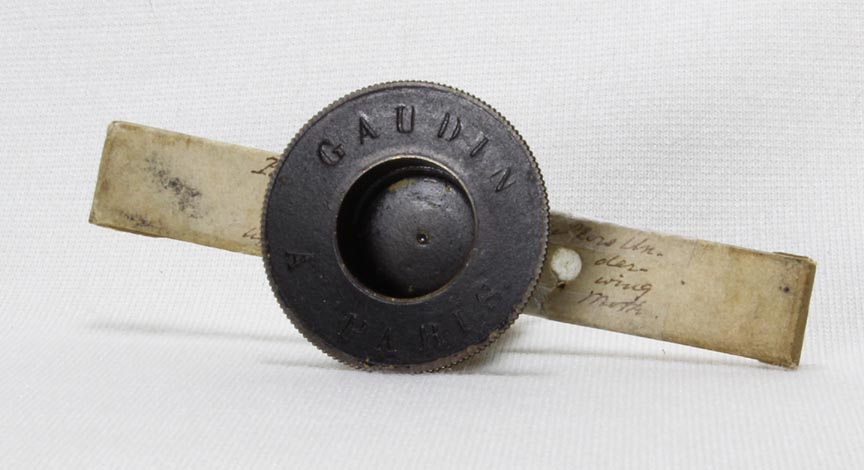
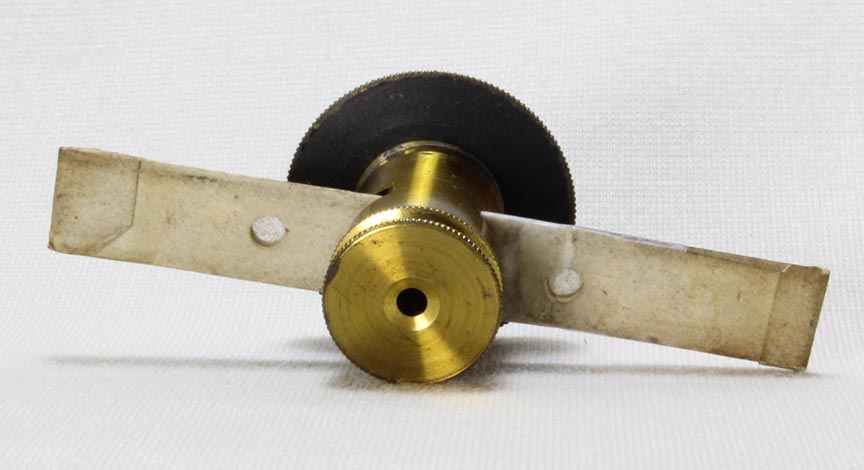
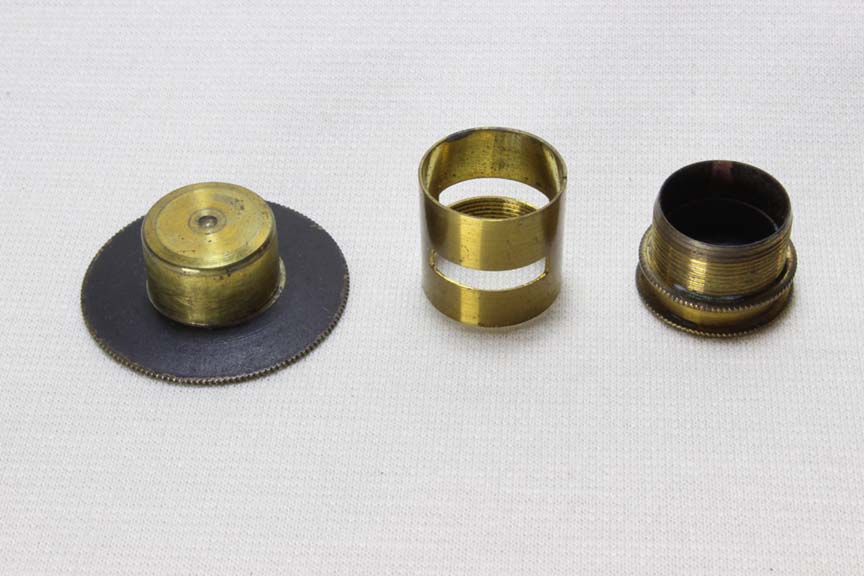

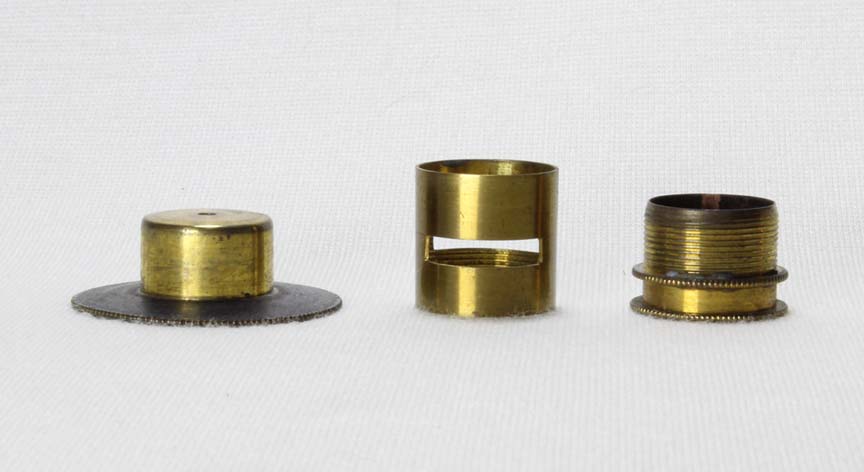
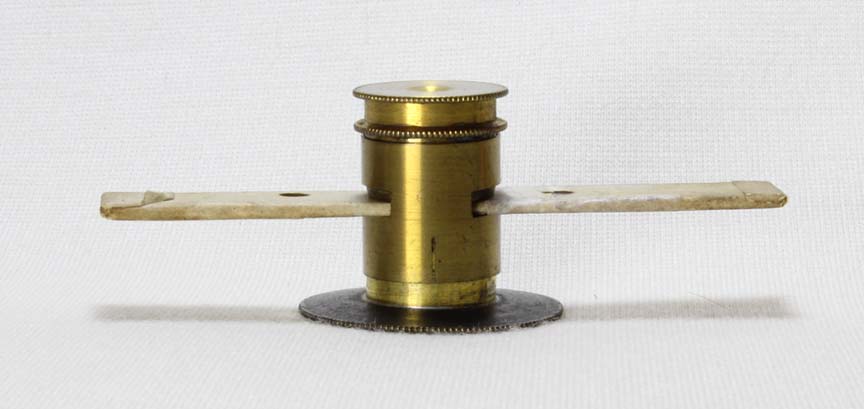

 Apparently Gaudin microscopes were sold by others than just Gaudin as illustrated by the page from the Lebours et Secretan catalog seen here.
Two forms of Gaudin microscope are known. One is the type shown above, hand held. Another type is that shown to the right from another private collection, using a short 'drum' configuration, and has a rotatable mirror under the slit for the slide. The lens housings are the same for both models, but the drum type may have two different lens housings for two different magnifications.
Apparently Gaudin microscopes were sold by others than just Gaudin as illustrated by the page from the Lebours et Secretan catalog seen here.
Two forms of Gaudin microscope are known. One is the type shown above, hand held. Another type is that shown to the right from another private collection, using a short 'drum' configuration, and has a rotatable mirror under the slit for the slide. The lens housings are the same for both models, but the drum type may have two different lens housings for two different magnifications.